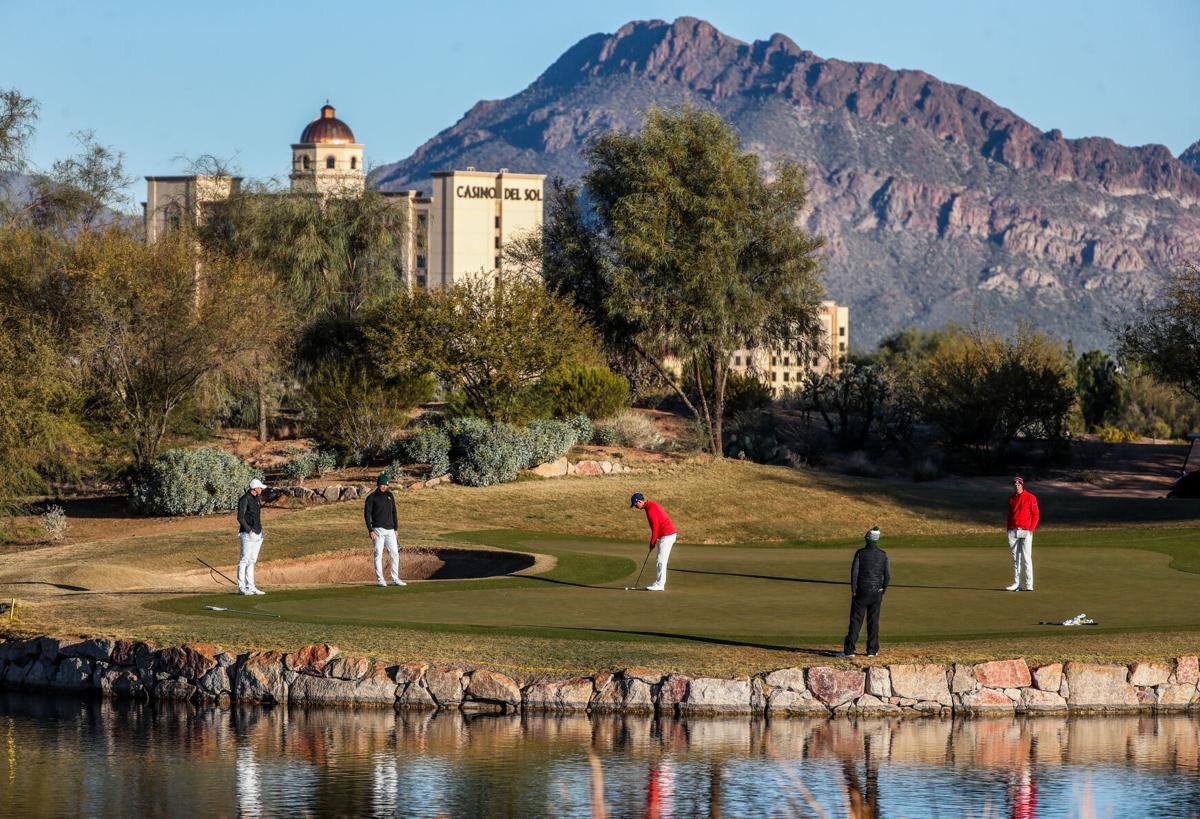Three years ago, officials from the City of Tucson and the UA athletic department visited the renovated Papago Golf Course near the ASU campus and returned with a four-letter description of the Sun Devils’ $10-million golf facility — envy.
The collaboration between the City of Phoenix, ASU and Sun Devils icon Phil Mickelson was so far above the UA’s distant golf compound at Casino del Sol’s Sewailo Golf Club — so far beyond every Pac-12 golf facility except Stanford’s magnificent Seibel Golf Training center — that it makes you wonder how the Wildcats have been able to compete with Sun Devil golfers.
And yet Arizona’s men recently won the Pac-12 title and on Wednesday, the Wildcats qualified for the finals of the NCAA women’s tournament.
The UA continues to explore relocation of its faraway golf facility, but the exploration has essentially been reduced to a two-course showdown between the Tucson Country Club and the Randolph Golf Complex.
You couldn’t get two more different settings. In Tucson golf terms, the TCC is High Roll Central, the secluded golf home of UA president Robert C. Robbins. Randolph North is a muni course open to all. This winter, its thinning fairways were painted a psychedelic green.
Talk about a class struggle.
Price to the UA for either location: about $10 million.
Getting involved in the arms race of college golf is far from the most important item on the get-this-done agenda of any Power 5 athletic director, but if not now, when? Arizona has won four NCAA golf championships the last 30 years, but has fallen so far behind its Pac-12 peers that even the snow-bound Utah Utes recently opened the $3 million Layton Golf Academy.
And Utah doesn’t even have a women’s golf program.
Ordinarily, this would be no contest. A five-star golf recruit would choose TCC every time. But the City of Tucson, the Tucson Conquistadores and the Rio Nuevo district have discovered that if they combine forces they can turn the 90-year-old Randolph North into a jewel of a municipal golf course, rebuilt and ready for the next 90 years.
This is a project that can benefit not just the UA golf program, but one that would be inclusive to all Tucson golfers and thousands of winter visitors.
It is the last best chance for Randolph to restore its identity as one of America’s elite muni courses, one that hosted PGA Tour and LPGA Tour events in the 1980s and 1990s.
Before COVID-19 hit, the UA administration appeared to be moving toward a deal with Randolph. Tucson golf course architect Ken Kavanaugh completed detailed drawings that turned heads.
The new Randolph would be a par-70, 7,300-yard championship course suitable to elite college golfers. I’ve seen the drawings. It wouldn’t infringe on the adjacent Dell Urich course — a gem designed by Kavanaugh 25 years ago — and it wouldn’t inhibit the walking/jogging paths on the complex’s perimeter.
The proposed UA golf compound would include a $5 million clubhouse and practice area near Broadway Boulevard and the Reffkin Tennis Center. It would create a new driving range at what is now the No. 9 hole. Randolph golfers would tee off from the south end and UA golfers from the north.
The feasibility study includes a private parking area for UA golfers with exclusive entry and exit access. On paper, it looks to be as impressive as ASU’s reimagined golf facility at the Papago Golf Course.
More? The PGA Tour Champions event, now held at Tucson National, could be relocated to Randolph, as might the home of the First Tee of Tucson, now headquartered at the El Rio Golf Course.
The Randolph Golf complex could become Golf Central.
If they pursue the deal, the City of Tucson, the Conquistadores and the Rio Nuevo district might be able to raise about $3 million of the cost. The UA would pay the rest; something so ambitious might move the most famous Wildcats golfers, athletes like Jim Furyk and Annika Sorenstam, to be lead donors.
Can you picture statues of Furyk and Sorenstam near the entrance of the new clubhouse?
A few years ago, former Arizona athletic director Greg Byrne toured some of the nation’s leading golf complexes and discovered just how far behind the UA was. He was impressed by Iowa State’s 16-acre development three miles from campus. The architectural design included what looks to be a farmhouse and a silo. It worked.
Iowa State isn’t anyone’s idea of a college golf power, but its $3 million golf facility and its location is far superior to that of Arizona.
The Wildcats went for decades without a true “home course” or any sort of go-to facility. They once had a plan to build a practice area on Campbell Avenue near the Rillito River. In 2002, the UA thought it hit the jackpot when new Arizona National owner Jeff Silverstein offered its facilities to the Wildcats at no charge. Silverstein even built an impressive Wall of Fame, honoring the UA’s many pro golfers.
But Silverstein soon encountered financial difficulties and Arizona National all but went out of business. The course deteriorated; day-to-day upkeep was below standards. Plus, the 30-minute drive to and from practice also became a recruiting deterrent, as is the commute to and from the Sewailo Golf Course.
Maybe this is a long shot. Maybe going head-to-head against the Tucson Country Club is a golf game a muni course can’t win, even if it does make a lot of sense.
After winning last week's Pac-12 Championships, the Wildcats are the No. 4 seed in the Cle Elum Regional in Washington. UA coach Jim Anderson thinks it'll be an advantage for the team.





